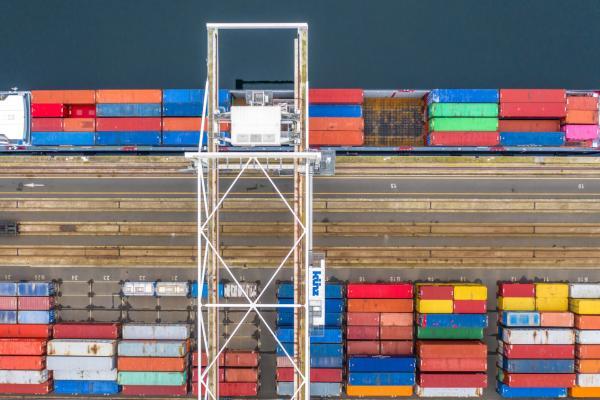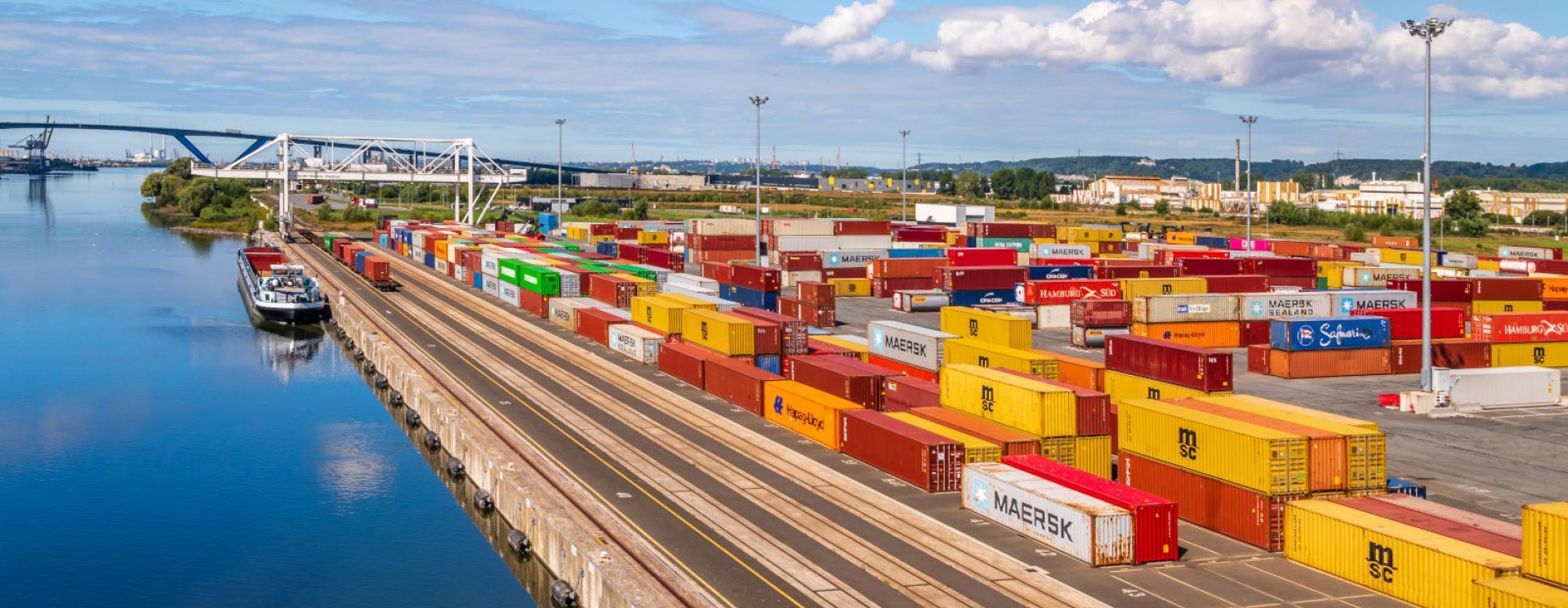Multimodality : An attractive multimodal offering
More informations

Published on - Updated
In order to make the river an integral part of logistics systems, direct river access to Port 2000 (in Le Havre) is in the process of being provided. Using this protected navigation channel, the entire barge fleet will be able to connect Port 2000’s container terminals with the historical port and the Seine.
HAROPA PORT is ensuring reliable rail access for its installations and modernising the rail lines at its various facilities. Particular attention is being paid to ease of access to Paris platforms and the development of the cereal-growing hinterland of Rouen port as well as expansion of the container market for Le Havre’s facilities.
The modernisation of the Serqueux-Gisors rail line in the spring of 2021 created an alternative freight route and “decongestion” of the Paris – Mantes-la-Jolie – Rouen – Le Havre line. This network segment allows the Seine Axis ports to handle up to 25 freight trains daily (i.e. 12 daily round trips), which benefits massified transport and modal transfer between Normandy and the Paris basin.
HAROPA PORT is working with central government, local government bodies and SNCF Réseau to identify and concretise possibilities for the development of new platforms. The issues include the decarbonisation of the logistics chain by linking up a series of combined transport projects in geographical areas offering potential markets big enough for the development of massification services. This also necessarily involves an overhaul of the urban ports in the Paris area.
New river ports are also at the planning stage with a view to strengthening the market offering of land areas and river infrastructure for the construction industry. These include:
The development to the west of Paris of a multimodal port platform exclusively for activities relating to the construction and civil engineering sector will allow modal transfer for goods to be expanded, reducing congestion on the road network. The project is being driven as part of the Grand Paris project (it is scheduled to be phased into service from 2025, continuing to 2040).
HAROPA PORT is developing solutions in its local regions for supplying alternative forms of energy. By the end of 2024, almost a hundred more water and electricity supply terminals will be installed on the Seine axis to enable riverboats to connect to the landside grid. 44 have already been installed on quays managed by HAROPA PORT and VNF, saving 4,300 tonnes of CO₂ emissions per year.
Supported by VNF and HAROPA PORT, this project represents a total investment of €9.2 million, backed by Europe and the Ile-de-France region.
Following the same logic, HAROPA PORT is providing several NGV service stations at its facilities for carriersin its port areas (NGV = Natural Gas for Vehicles, in two forms: compressed (CNG) and liquefied (LNG). The biggest such station in France has been set up at Gennevilliers port. Other alternative fuels may emerge in coming years: e.g. hydrogen, biofuels.
HAROPA PORT is implementing a collaborative programme with all stakeholders to facilitate throughput using massified modes (rail and river). This is based on the following:
HAROPA PORT’s market offering of services is based on the development of massified modes using rail and river.
As for containers, since 2021 HAROPA PORT has had a commercial incentive scheme for modal transfer to support the development of combined rail and river transport. The objectives: to make the offering more competitive and to increase the volumes carried to and from HAROPA PORT facilities.
HAROPA PORT is pursuing its policy of acquiring equity in inland terminals. For combined transport, this is already the case with regard to the companies operating the river terminals in the Paris area (PTSA), the Le Havre Multimodal Terminal (LHTE) and the Mulhouse-Rhine ports (Alsace Team).
One of the ways forward under consideration for easier customer access to massified transport is simplified provision of information on multimodal capacity and services (rail, road, river and sea) available between HAROPA PORT platforms and the hinterland. In order to achieve the objectives of modal transfer and given the issues surrounding decarbonisation and the ecological transition for logistics flows, the port is also assisting the development of IT systems for goods monitoring as applied to river and rail transport. Another objective is to simplify administrative and customs processes for goods.
More generally, HAROPA PORT is endeavouring to develop a strategy for port land that will benefit modal transfer and the development of rail/river traffic.
Specifically, this effort involves:
